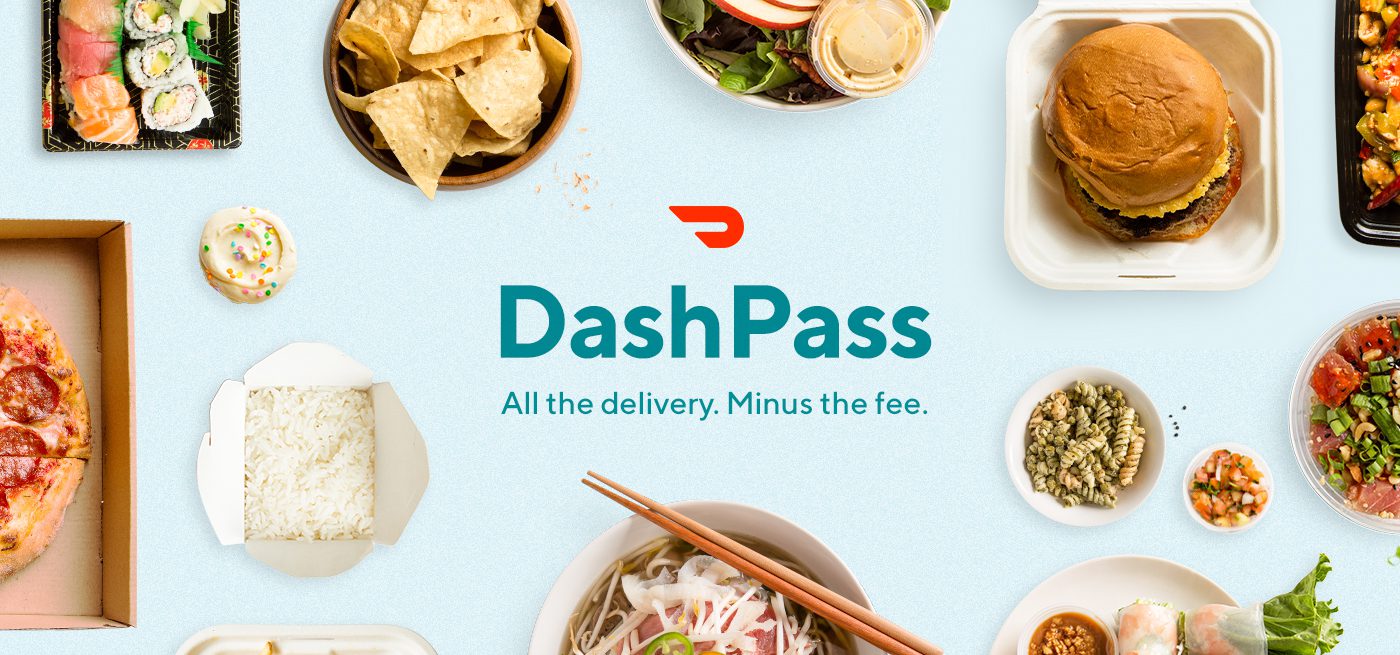DoorDash Subscribes and OpenTable Seats
12 Min Read By MRM Staff
MRM’s News Bites features DoorDash, OpenTable, Dinova, Bite Squad, Impossible Foods, HEROFi, Digital Six Laboratories Inc. and the loss of a hospitality industry leader.
Send news items to Barbara Castiglia at bcastiglia@modernrestaurantmanagement.com.
DoorDash Expands Service Menu
Responding to feedback from restaurant partners and guests, DoorDash unveiled two new services: DashPass, a subscription offering unlimited deliveries with no delivery fee, and Pickup, which allows DoorDash customers to order ahead, skip the line, and pick up their food on their own time with no fees.
Christopher Payne, Chief Operating Officer at DoorDash, told Modern Restaurant Management (MRM) magazine that DashPass will help restaurants by putting their business in front of the company’s most active user base, generating greater reach and revenue. With Pickup, DoorDash can provide an all-in-one off-premise solution for merchants as well as drive incremental demand for lower-priced items such as coffee and breakfast items, grows revenue, minimizes in-store lines and allows restaurants to anticipate an influx of to-go orders, he explained.
“This felt like the next logical step based on customer feedback that we’ve become part of the daily routine,” added Payne.“DashPass and Pickup introduce even more convenience and cost savings for customers, and we’re excited to see how these new offerings captivate our customers and drive incremental sales for our restaurant partners.”
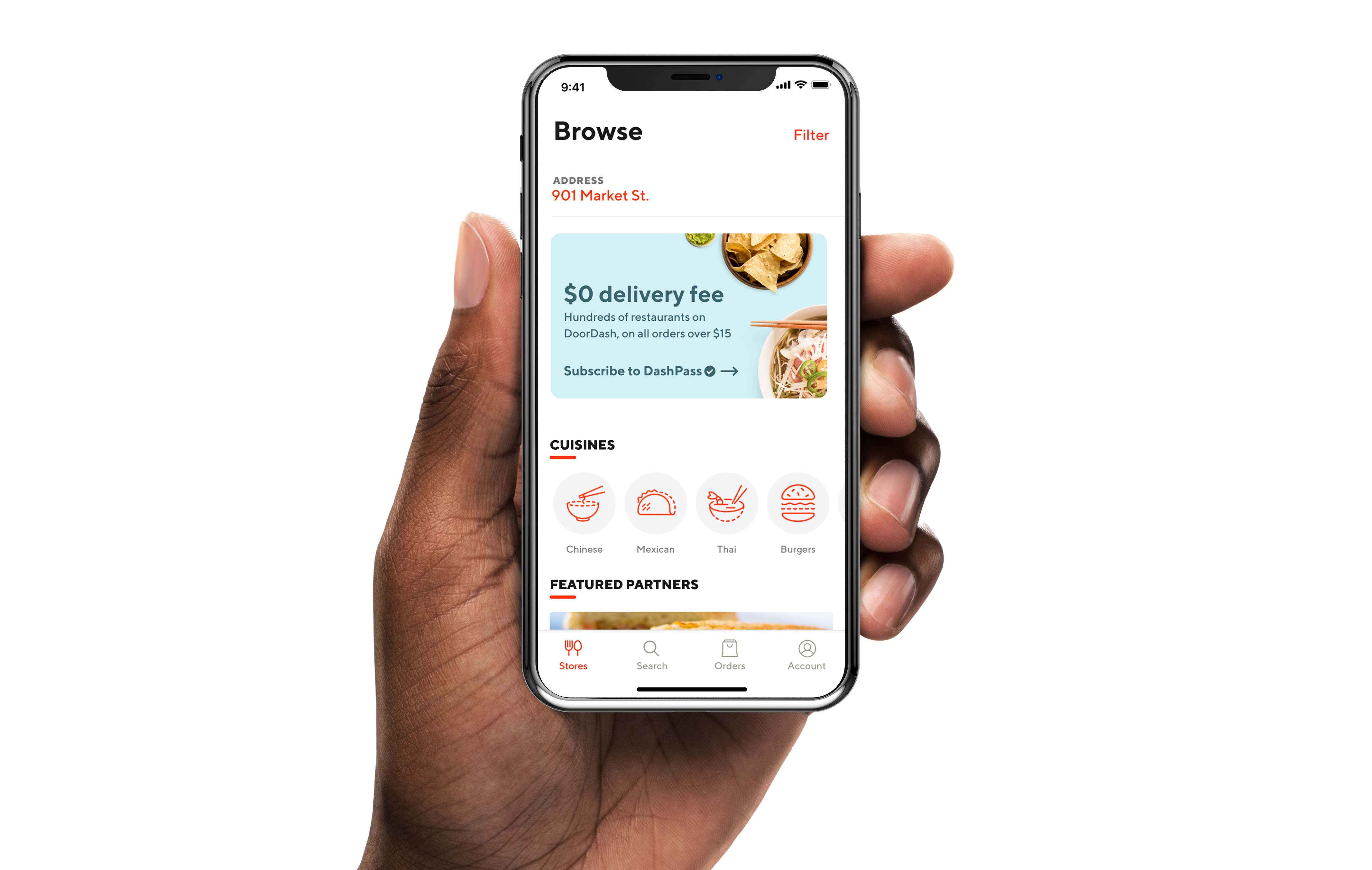
For $9.99 per month, DashPass subscribers receive unlimited access to thousands of the best local and national restaurants, with a $0 delivery fee on orders of $15 or more. Subscribers can order from eateries such as The Cheesecake Factory, California Pizza Kitchen, White Castle, Jack in the Box, and many more, all with $0 delivery fees.
The membership pays for itself with just three monthly orders on average, and customers have the option to cancel anytime, no strings attached. The average DashPass subscriber saved over $20 per month and ordered nearly twice as much after subscribing during the pilot program.
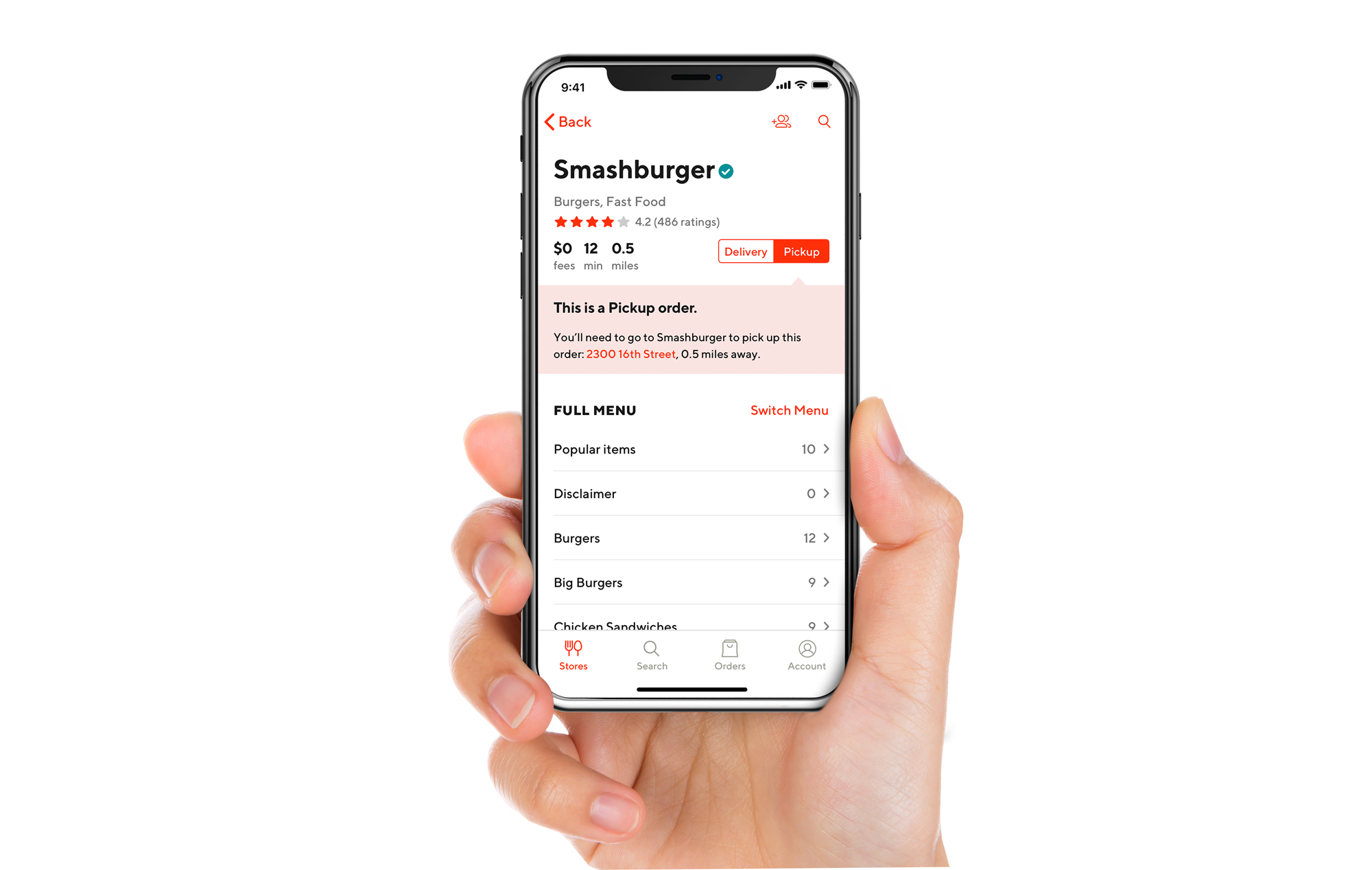
Pickup allows any customer to order ahead through DoorDash, skip the line, and pick up food from the restaurant as soon as possible, with no fees. For time-crunched customers, Pickup alleviates the anxiety of wait times and provides an affordable way to get VIP access to the best selection of restaurants without the added delivery expense. National classics like Smashburger, BJ’s Restaurant & Brewhouse and Pokeworks are rolling out Pickup through DoorDash across the country this week. Local favorites available for Pickup include: Chopt Creative Salad Co. in New York City, Jetties in Washington, D.C., and Big Star in Chicago.
With Pickup, DoorDash now provides an all-in-one off-premise solution for merchants. Pickup drives incremental demand for lower-priced items such as coffee and breakfast items, grows revenue, minimizes in-store lines and allows restaurants to anticipate an influx of to-go orders.
DoorDash is currently available in more than 1,000 cities across the U.S. and Canada. DoorDash will continue to enhance its platform to empower the local economy and provide customers with unprecedented access to their local businesses, added Payne.
“We are adding more cities and providing new choices in places that just had pizza and we’ll keep adding new restaurant partners.”
OpenTable Rolls Out Seating Options
OpenTable is rolling out Seating Options to allow diners to reserve a seat at the bar, counter, a table outside and more during the reservation process. Not only does the feature give diners the freedom to choose where they want to sit at the restaurant, even before they arrive, but it also increases restaurant availability during peak dining times.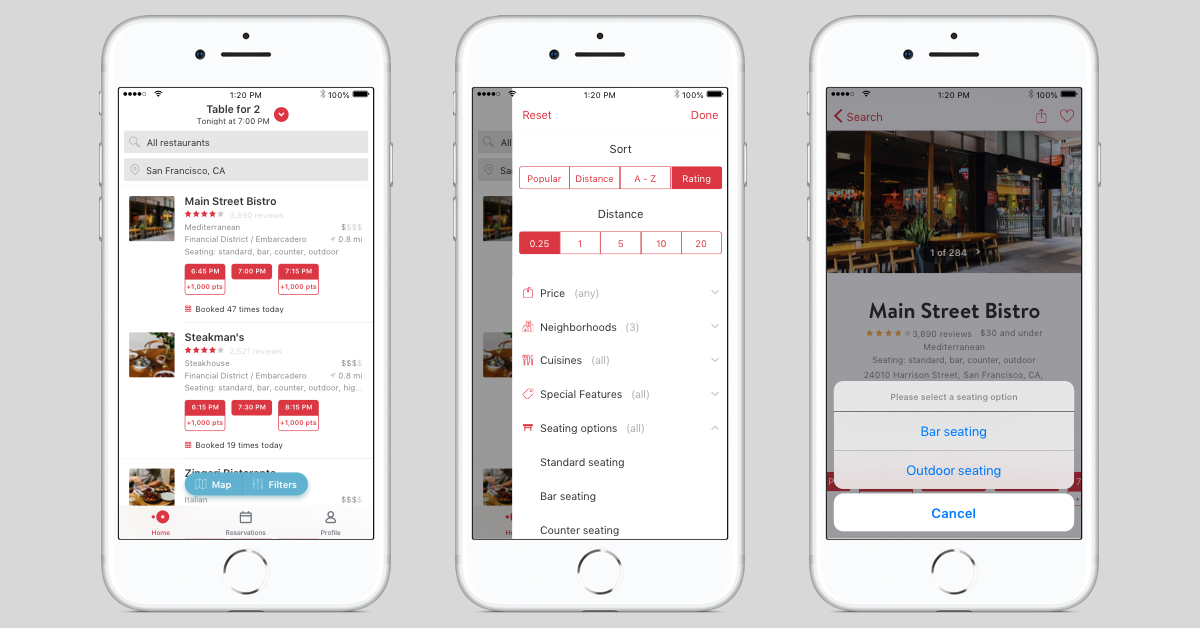
Diners can now find restaurants around the globe offering various seating options and table types when searching for reservations across desktop and mobile web, as well as on the OpenTable iOS and Android apps. Alternative seating options are noted with a table icon on restaurant profile pages.
“With Seating Options, diners have the flexibility and freedom to make each dining experience exactly what they desire, whether it’s an awesome scene by the bar or a quiet spot outdoors”, said Joseph Essas, Chief Technology Officer at OpenTable. “It’s also a powerful tool for restaurants, who can now offer diners even more choice, while maximizing every seat in the house.”
Located within GuestCenter, OpenTable’s flagship restaurant management product, Seating Options allows participating restaurants to categorize tables on their floor plan as either standard, bar, high top, outdoor or counter. These alternate seats are typically empty despite being highly coveted. Aside from attracting diners who may be looking for a seat at the bar or on the patio, Seating Options allows restaurants to open up more seats, increase the number of reservations available and ultimately boost profit.
“On busy nights, we’re always getting requests to reserve bar seats,” said Lien Ta, Managing Partner of Here’s Looking At You restaurant in Los Angeles. “Seating Options make it possible for more diners to find seats at our restaurant during peak hours and allows us to bring in guests who may have sought an alternative restaurant to dine at otherwise.”
Seating Options is now available globally with nearly a third of restaurants on OpenTable already using the feature.
The Psyche of the Business Diner
Clear generational differences exist when it comes to business traveler dining, payment and expensing options, according to new research released by the Global Business Travel Association (GBTA), in partnership with Dinova, Inc. According to first-of-its-kind research that delves into the psyche of the business diner, Millennials are more likely to dine on-the-go, while Boomers are most likely to wine and dine clients and Gen Xers typically dine in a group with colleagues.
Contrary to popular views that Millennials are often entitled or difficult employees, they are much more likely to have reservations about ordering extras such as room service (66 percent) or coffee and snacks (70 percent) while traveling as opposed to their Gen X or Boomer colleagues – even when their travel policy permits it.
When asked what diners can expense in their travel policies, 71 percent of respondents said client meals, 56 percent said group meals and 46 percent said alcoholic beverages. Additionally, 72 percent said they pay for meals with a corporate credit card.
“A one-size-fits-all approach often isn’t the answer when it comes to crafting travel policy,” said Jessica Collison, GBTA research director. “The research reveals that clear generational differences exist when it comes to preferences around dining out while traveling for work. For travel buyers considering a preferred dining program, it’s important to make sure the program you choose meets the needs of all of your travelers.”
“The research findings really highlight the significance of understanding the spectrum of travelers within an organization,” said Alison Galik, president of Dinova. “Travel managers are serving multiple generational groups, each with their own preferences. The more they can dial in on what makes for a good travel experience, on the opportunities for reducing employee stress and increasing job satisfaction – and then cater to and engage their travelers in those areas – the more effective their overall program will be. We believe dining is an area that absolutely fills this bill. Cultivating a successful preferred dining program can both serve a broad range of needs and help create an unforgettable travel experience.”
Technology and Dining
In today’s world, technology has become an essential part of how employees of all ages travel, but as digital natives, Millennials especially embrace technology and not surprisingly, are more willing to use the tools and technology made available to them through their travel programs. The research found that 63 percent of business travelers research where to dine prior to leaving for their trip. When broken out generationally, Millennials are much more likely to use Uber Eats while Boomers prefer to search for the best-reviewed restaurants in the area and use Yelp. In fact, 63 percent of business travelers have dining related apps on their mobile phone. In the last year they used their device to search for local places to eat (54 percent), to make a reservation (47 percent) and to search social media for information about a restaurant (33 percent).
Healthy Eating
Eating healthy on the road has become front and center for business travelers, which is why the vast majority (77 percent) of business travelers consider it to be important when traveling. Additionally, 64 percent prefer healthier menu options and 43 percent want to see published nutritional facts. When ranking factors for choosing a restaurant on the road, three in 10 Millennials rank the nutritional value of the meal in their top two reasons.
Where Are Business Travelers Dining?
Dining is always on the mind of the road warrior, and the type of dining they do depends on the trip. The study found that in total, 64 percent of business travelers take their money to upscale casual restaurants, followed by fast casual (52 percent), fast food (34 percent) and finally, fine dining (29 percent).
Preferred Dining Programs
Similar to how companies have preferred airline, hotel or car rental vendors, a preferred dining program provides a list of policy approved restaurants for dining on official company business. Nearly 4 in 10 (38 percent) business travelers say their companies have a preferred dining program and a similar share (37 percent) are interested in having one.
Additionally, 74 percent say they would be more motivated to use a preferred program if they earned rewards. Interestingly, 75 percent of Millennials would be more likely to become a member if rewards points could be redeemed toward their favorite charity, compared to 61 percent of Gen Xers and 42 percent of Baby Boomers.
Bite Squad Adds 100 Cities
Bite Squad added 100 new U.S. cities to its service area in 2018, and plans to add approximately 100 more this year. The recent additions expand the company’s national footprint to more than 300 cities. Bite Squad expects to serve over 400 cities, in 22 states, by the end of 2018.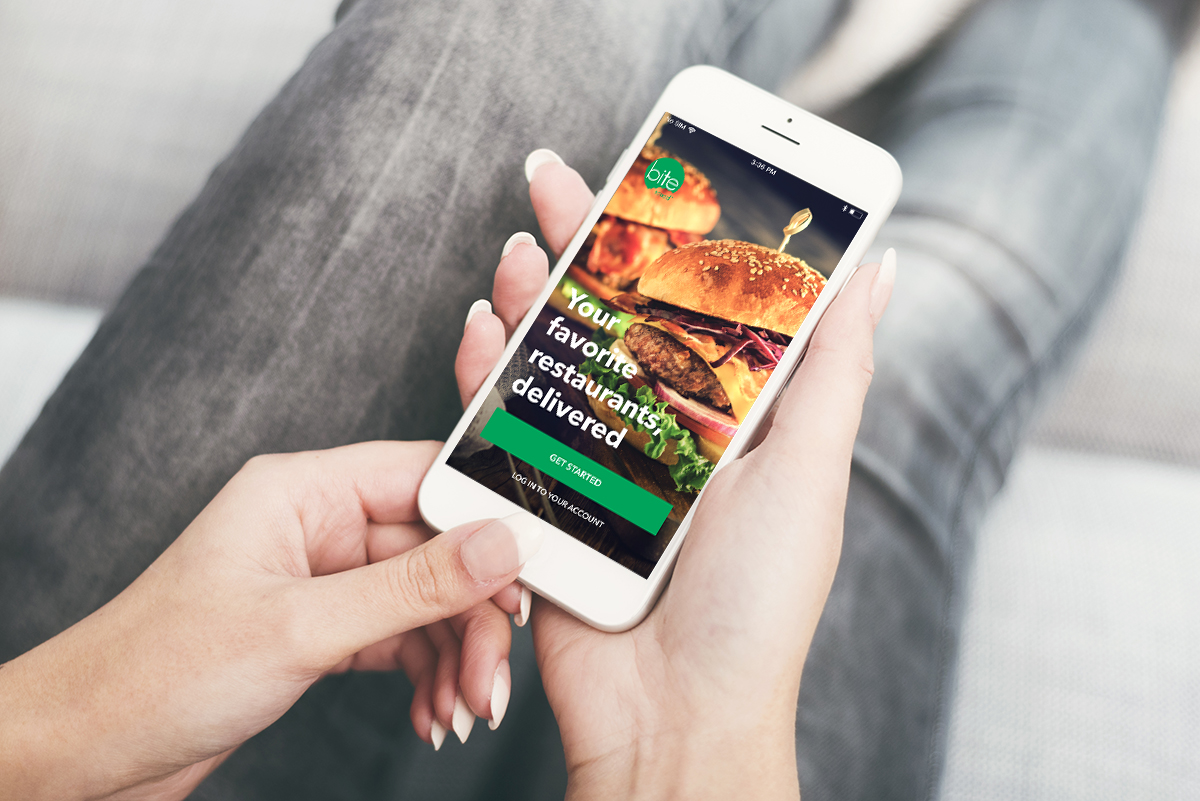
“A major percentage of the largest U.S. cities are underserved when it comes to food delivery service,” said Bite Squad CEO and co-founder, Kian Salehi. “We’re thrilled to move into these areas where consumers want more access to food delivery and restaurants are ready for a strong partner in what is the fastest growing opportunity in the industry.”
Bite Squad’s 100-city expansion includes the acquisition of 13 regional restaurant delivery companies in Florida, Texas, North Carolina, Mississippi, Oklahoma and Wisconsin, as well as organic market expansions in Florida, Arkansas, South Carolina, North Carolina and Minnesota. The growth follows the company’s acquisition of 17 local restaurant delivery companies in 2017.
“Our unique business model creates healthy unit economics, allowing us to grow and scale both rapidly and profitably,” said Salehi. “Unlike many companies in this space, we’re experiencing organic growth, funded by our own profits. Post-integration growth in acquired markets is explosive, and response in new, organic markets is strong.”
Impossible Impact
Impossible Foods published its 2018 impact report, an annual update on the food tech startup’s mission, business and strategic roadmap.

The Impossible Burger is now available in at least 3,000 locations in the United States, Hong Kong and Macao — up from only 40 restaurants one year ago. Americans have eaten about six million Impossible Burgers since July 2016, when the product first debuted to lines-around-the-block crowds at Chef David Chang’s trendsetting restaurant Momofuku Nishi in New York City.
The Impossible Burger is now served in a wide range of restaurants — from taquerias and food trucks to fine-dining establishments and America’s most beloved “better burger” concepts Fatburger, Umami Burger, Hopdoddy, The Counter, and B Spot (the Midwest burger restaurant owned by Chef Michael Symon). Chefs have launched menu items such as Impossible tacos, pizza, empanadas, Cantonese baos, noodle dishes, kefta, meatballs, nachos, omelettes, breakfast sandwiches and other fare.
Earlier this year, America’s original fast-food restaurant, White Castle, added the Impossible Slider to menus in 140 restaurants nationwide. More fast-food restaurants and casual chains will begin serving the Impossible Burger later this year.
To meet growing demand, Impossible Foods is hiring a second shift of employees to double production at its first large-scale factory, in Oakland, California. The company has raised more than $450 million in funding since the company was founded.
CEO and Founder Dr. Patrick Brown said Impossible Foods is on track to eliminate the need for animals as a food production technology by 2035.
“Until today, the only technology we’ve known that can turn plants into meat has been animals — but cows, pigs, chicken and fish are terribly inefficient at turning plants into meat. We now know how to make meat better — by making it directly from plants,” Brown said. “In eliminating the need for animals in the food system, we will return massive tracts of land to biodiversity, reduce food insecurity and global conflicts, and let the Earth heal itself. Eliminating the need for animals in the food system is the easiest path to preserve our planet — without compromising quality of life.”
The 2018 sustainability report, “Mission: Earth,” candidly charts Impossible Foods’ progress — including its biggest challenges — in the pursuit of its 2035 vision.
The report also highlights the results of a study from researchers at Denmark Technical University to understand the impacts of adoption of Impossible Foods’ product at a national scale. Those researchers (academics and experts who have no stake in Impossible Foods) found that if Americans were to replace 50% of ground beef from cows with Impossible Foods’ plant-based beef, we would conservatively:
Impossible Foods’ 2018 report also provides details about the company’s fledgling efforts to contribute to communities where it does business. The startup launched partnerships this year with food banks that serve those affected by food insecurity, including the nation’s largest food bank, in Alameda County, California. Impossible Foods is committed to expanding its programs from Northern California to additional food banks nationwide.
Learn more by reading the 2018 Impact Report online
HEROFi Secures Financing
HEROFi, a revenue optimization company for physical retail, completed a convertible debt financing of $3.5 million. Founded in 2014, the company specializes in using its intelligent orchestration platform to drive proven revenue through real-time product packaging and pricing. HEROFi’s clients use real time data – such as sales, inventory, weather, traffic and more – to create better and more effective consumer in-store experiences. In addition to its current client base of leading companies in the restaurant (Buffalo Wild Wings), gaming (Pechanga), and shopping mall (Westfield Malls) industries, HEROFi is close to completing agreements with major footwear and QSR companies as well as with a leader in the casino sector.
The financing included Jeff Vinik, the current owner of the Tampa Bay Lightning, and the former manager of Fidelity Magellan Fund and hedge fund Vinik Asset Management; Rob Soni, a former partner at Matrix and Bessemer Ventures; and John McDonnell, Managing Director International, Fifth Generation Spirits, Inc.
The financing provides HEROFi with adequate working capital to continue to expand and rollout its award-winning Guest Experience Platform (GXP) – which is already available in over 1,300 retail locations in eight countries. By ingesting and processing external and internal data in real-time, the platform enables clients to respond immediately to changing business conditions. HEROFi works closely with clients to create rules applicable to their business and to launch and scale successful projects quickly and efficiently. HEROFi’s platform drops into almost any existing technology environment, and provides a simple interface that anyone can use.
“We aim to fundamentally change the way retail operates. The GXP platform gives retail operators the ability to blend a broad variety of data sources, react to this data in real time, and do it at the individual store level in an automated and simple way,” said Vladimir Edelman, Chief Executive Officer of HEROFI. “Today’s announcement allows us to keep innovating and developing key features for blue-chip clients already working with us to optimize their revenue, and helps us continue to produce material and provable ROI for all of our clients.”
D6 Labs Releases IoT Food Safety Solution
Digital Six Laboratories Inc. (D6 Labs), released FoodSafe.io™ technology, and IoT solution designed specifically for restaurant food safety.
FoodSafe.io™ is a technology that improves the efficiency and effectiveness of food safety practices for restaurants, especially quick-serve restaurants. The technology has been in development and field testing for the past year and is now poised to give restaurant owners the ability to significantly increase food safety in their restaurants. FoodSafe.io™ incorporates handwashing monitoring, safety inspection guidance and monitoring, and cold-storage monitoring to give owners a complete and continuous view into the state of their food safety without distracting them from other necessary tasks.
“FoodSafe.io™ is an exciting technology that solves a serious problem facing society today: food safety,” says Steve Montgomery, CEO of D6 Labs. “Using our proprietary long range, long battery life, wireless technology, we are able to automate monitoring of handwashing compliance, food refrigeration, and cooked food temperatures.”
Key benefits of FoodSafe.io™ include the ability for restaurant owners or managers to receive alerts when something is amiss, a significant reduction in safety log falsifications (also known in the industry as “dry-labbing,” “pencil whipping,” or “punching in the numbers”), and acute visibility into handwashing compliance. An additional benefit is the ability to monitor equipment for impending failure or maintenance related issues, allowing managers to address problems before they become critical or expensive failures.
“We installed FoodSafe.io™ several months ago and I now keep track of all food safety aspects for my restaurants right from my cell phone—I use it multiple times a day” says Mike Sawyer, Chief Operating Officer of KTAK Corp, a McDonald’s owner/operator in Tulsa, Oklahoma. “Our organization is committed to the highest standards in compliance with food safety policies and best practices and FoodSafe.io™ makes maintaining that standard easier and far more efficient.”
FoodSafe.io™ includes wireless temperature sensors, called Whisker.Blocks™, that measure air and food temperature, reporting values every 5 minutes; an intelligent software agent that monitors these sensors 24/7, generating alerts any time a problem is observed; smart hand soap dispensers that measure the usage of hand soap, reporting such counts every 5 minutes; a FoodSafe.io™ application running on a tablet that keeps track of all required food safety checks that produces a daily compliance report; and an executive dashboard for viewing multiple locations and drilling down into sensor details.
IFSEA Leader John DeJong Dies
The restaurant hospitality industry suffered a loss when Johan Adam “John” DeJong died at age 94 on July 22.
Born on April 26, 1924 in Amsterdam, Netherlands, he spent his lifetime devoted to the hospitality industry as well as being a beloved husband, father, grandfather, great-grandfather and friend.
His professional accomplishments include being General Manager of the Poinsett Club and General Manager of the Greenville Country Club, both clubs in Greenville, South Carolina; Executive Chef, Piedmont Driving Club, Atlanta, Georgia and the Detroit Driving Club, Detroit, Michigan; Executive Chef for the Carolina Panthers National Football League Summer Camp, Spartanburg, South Carolina. Chef DeJong traveled on seven separate occasions evaluating US Military dining facilities to select the “Best of the Best” Dining facilities.

DeJong was an active association member. He was a server-leader as President of the Carolina Club Managers Association; member of the Club Managers of America Association; President of the International Food Service Executive Association (IFSEA); Founder and President of the Palmetto Branch of the IFSEA; Trustee for the IFSEA Worthy Goal Student Scholarships Foundation; and member of the American Culinary Federation, and American Academy of Chefs.
John DeJong’s awards and recognition are too numerous to list, said William L. “Bill” May, DODG, CFE South Carolina Palmetto Branch IFSEA. However, he was extremely proud of his recognition as a Certified Club Manager (CCM), Certified Executive Chef (CEC), & Certified Foodservice Executive (CFE). He was a recipient of the IFSEA’s Medallion of Honor signifying his induction in the prestigious Dignified Order of the Dinner Gong (DODG). John delighted in having the IFSEA Palmetto Branch name their highest award, The John A. DeJong Honor Award and to have been the recipient of this award in 1996 and 2002.
A memorial service was held Saturday, Aug. 4, in Mackey Funerals at Woodlawn, Greenville, South Carolina.
Those wishing to make a contribution in his memory are encouraged to consider the Worthy Goal Scholarship Fund, c/o Stan Gibson, Trustee, PO Box 824, Greer, South Carolina 29652.

